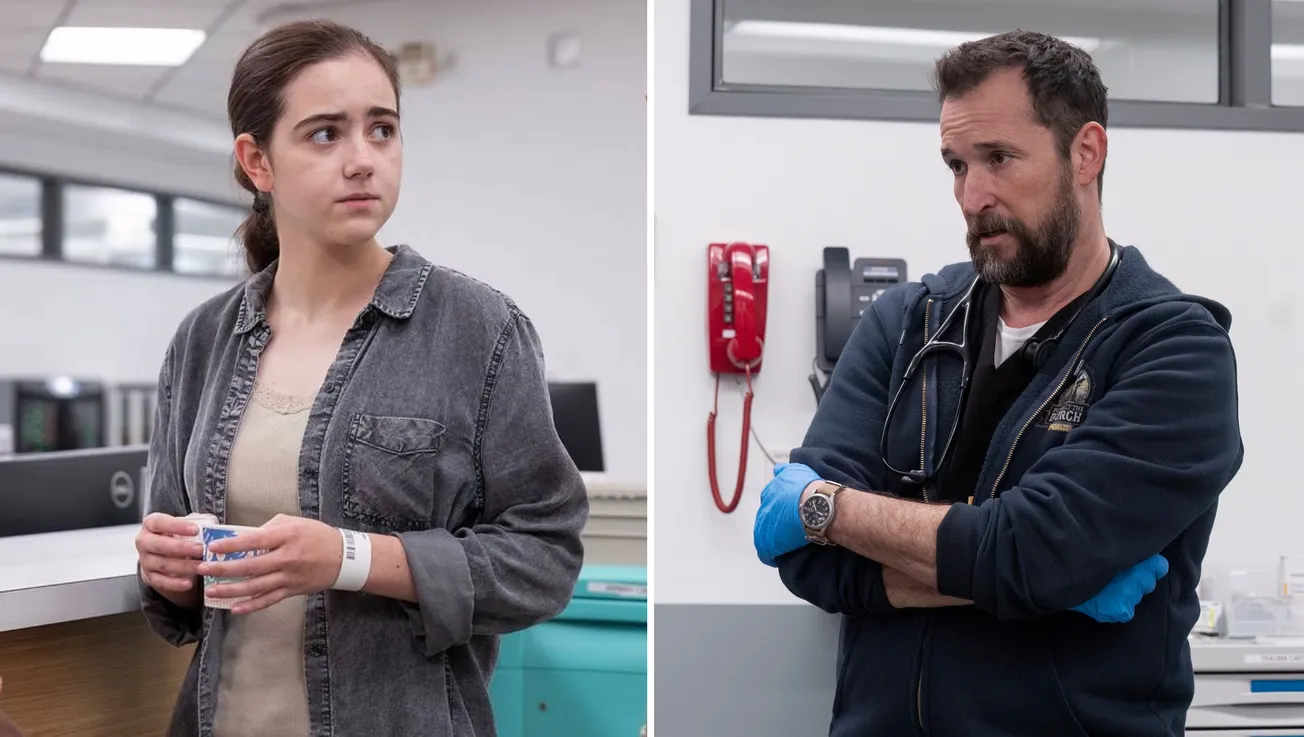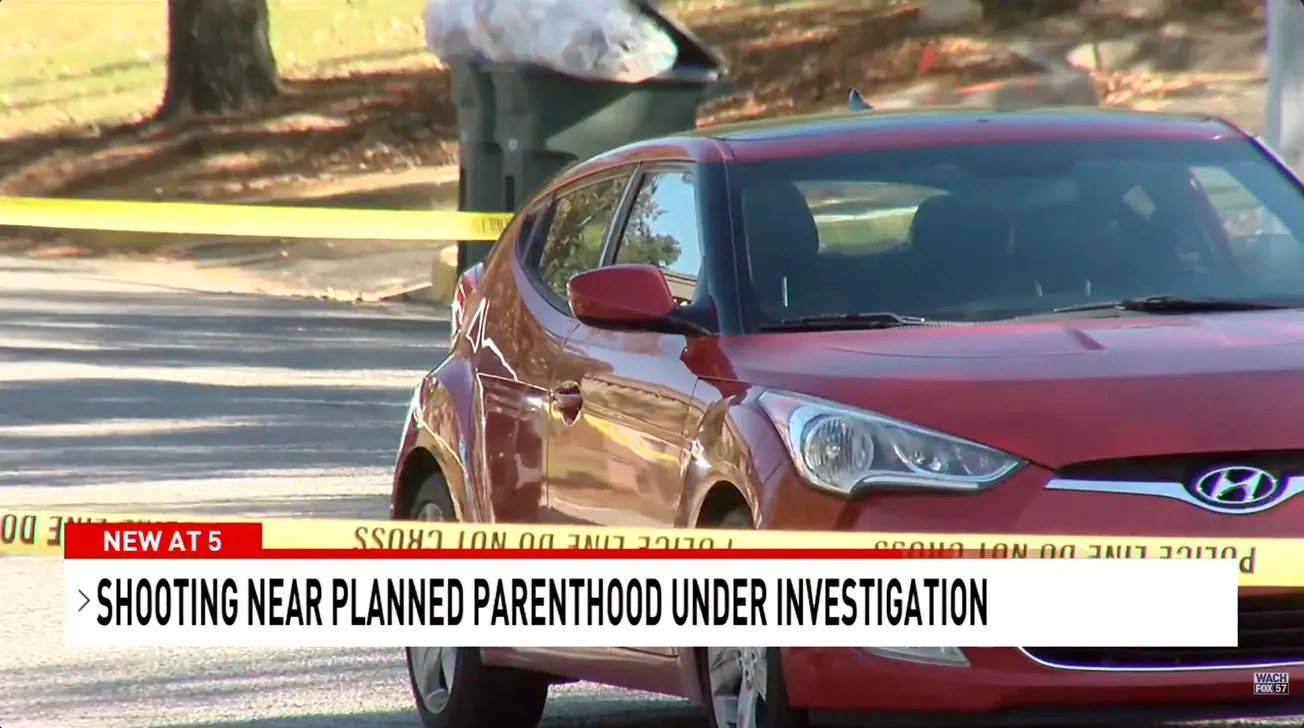When Kristi and Lynette Wheeler walk into the waiting room in HBO’s hit prestige drama The Pitt, they are rumpled and apologetic. They were told to come back to catch the doctor they saw earlier that day but overslept—and now that doctor has gone home. “We missed our appointment,” Lynette tells another patient. Her teenage daughter doesn’t comment.
Eventually, the duo are called back to see Dr. Heather Collins, a young, Black resident physician at the Pittsburgh, Pennsylvania, ER who is in her first trimester of a wanted pregnancy. Dr. Collins checks Kristi’s chart, sees she is there for a medication abortion, and as she does an ultrasound to check the gestational age of the fetus, the camera cuts away to another storyline.
When we come back to Kristi’s case, we see Dr. Collins speaking to her attending—and ex-boyfriend—Dr. Robinavitch. She’s insisting her ultrasound measurements put Kristi beyond a supposed cutoff for medication abortion—11 weeks from the first day of the last menstrual period. When her attending tells her to fudge the details, she schools him on the consequences for her as a trainee if she is caught falsifying medical records. Robinavitch—who everyone calls “Dr. Robby,” admits that she’s right and tells her that as the certified mifepristone provider working that day, he’ll handle it.
But before he can even speak to the patient, another woman bursts in. It turns out Lynette was not Kristi’s mother, but her aunt. Kristi’s mother forbids her from having the abortion and gets physical with her sister, shoving Dr. Collins in the process. Meanwhile, the teenage girl locks herself in a hospital bathroom and refuses to let her mother take her back to Tennessee, a state with a strict abortion ban. Eventually, Dr. Collins convinces the mother to allow her to dispense the pills, and Kristi gets in the car for the long drive home. The camera cuts back to Dr. Collins, who, we discover, has been having a miscarriage this entire time. We see Collins crying in a bathroom before she commandeers an exam room for her own ultrasound to confirm the pregnancy loss.
Credit where credit is due: The Pitt gets more right on medication abortion than any mainstream hospital drama we’ve ever seen. Still, it’s mostly wrong. First, there is no “11-week cutoff” for medication abortion in Pennsylvania: Public health guidance and internal clinic or hospital policies on cutoff times for medication abortion range from 9 weeks to 12 weeks, with current Food and Drug Administration guidance at 10 weeks. But more importantly, if Kristi was too far along for Dr. Collins’ comfort, she would more likely have referred her to an outpatient clinic or obstetrician.
The vast majority of emergency departments in the United States do not provide medication abortion—or abortion of any kind. Most do not even provide miscarriage management, which uses the same medications and procedures for early pregnancy loss as abortion care does. When Dr. Robinavitch references being the “certified provider” for mifepristone, he is referencing an unscientific, politically motivated requirement that all providers who prescribe mifepristone register with the drug distributor and the FDA. Not all emergency departments have a physician on staff who has gone through this process, and the requirement itself serves to deter all but the most motivated from pursuing it.
As a result, Dr. Collins—whose miscarriage is part of an understudied epidemic of pregnancy loss among frontline personnel—would likely not have been able to receive the medications in her own workplace. (Dr. Collins does not get any miscarriage management; she goes back to work.) In fact, only one emergency department in the nation has published on their medication abortion protocol: Stanford University. While their program is commendable as proof of concept and a tool to train new emergency physicians in this care, Palo Alto is not an abortion care desert where one might expect people to show up to the ER for mifepristone.

In the United States, the current standard of care for a patient who shows up to an emergency department experiencing a miscarriage or seeking abortion care is to send them home to seek follow-up care. If there are complications and the hospital has an obstetrics and gynecology department a physician can consult, they might do that. If they practice in a state where abortion is legal, they might even be able to refer patients like Kristi to a local clinic. Increasingly, however, emergency physicians practicing in rural areas lack access to both such consults and nearby clinics for direct referral, and they also lack the clinical education to provide abortion care themselves.
While the data show that emergency medicine physicians want to provide more and better abortion care, training and education on medication abortion is sorely lacking. According to a study published in February, 74.6% of Emergency Medicine physicians in a national survey reported that they “rarely or never” prescribe medication abortion. Even more alarming, only about a third (34%) reported that they could provide a direct referral for abortion care. This lines up with anecdotal reports from within the profession that emergency medicine physicians are generally leery of treating gynecologic issues: anecdata backed up by a 2016 paper showing that trainees preferentially cherry-pick patients to avoid those with vaginal bleeding.
If Kristi Wheeler had traveled to her aunt from Tennessee—not an unrealistic thing for a teen seeking abortion care to attempt—and her aunt had taken her to a major Pittsburgh emergency department, they would have simply been sent home. At best, they would have been referred to Allegheny Reproductive Health Center or Planned Parenthood, which are the primary points of care for abortion seekers in the Pittsburgh area.
Once there, her aunt would have had to falsify legal forms stating she was Kristi’s parent: Pennsylvania has a parental consent law, which The Pitt references when Lynette is confronted by her furious sister. While teens may access a broad variety of healthcare services in Pennsylvania without the consent of a parent, abortion remains singled out as an exception. Tennessee also has a law prohibiting “abortion trafficking,” making Lynette potentially liable for helping Kristi get to Pittsburgh in the first place. (The law is currently under an injunction preventing it from going into effect.) At worst, they would have found themselves in an anti-abortion crisis pregnancy center and run out of time before Kristi went home.
Even if a major Pittsburgh emergency department had managed to implement a medication abortion protocol, Kristi would not have been able to simply show up and get the pill with one visit. Pennsylvania requires a counseling appointment followed by a 24-hour waiting period before a second appointment where patients can access abortion care. At least one large Pennsylvania emergency department is currently working to implement a pathway to “start the clock,” meaning that when a patient shows up asking for abortion care, a nurse could provide the counseling paperwork and refer them to outpatient care. But that’s just one hospital, in a part of Pennsylvania that already has excellent access to care. While they increasingly function as a crucial part of the social safety net, emergency departments cannot realistically provide abortion care in Pennsylvania with the current legal barriers.
And yet, folks like Kristi and her aunt routinely show up to emergency rooms expecting to be helped. It’s a perception that will only be increased by The Pitt’s idealistic storyline. In the real world, every time abortion seekers are turned away decreases the likelihood that they will ultimately obtain care, with devastating impacts for their future health and economic welfare. Emergency Medicine physicians have a saying to encapsulate their mission: “Anyone, anytime, anywhere.” In states where first-trimester abortion is broadly legal, “anyone” must expand to include abortion patients.
The Pitt is a fantastic television drama that built its brand on a combination of intrigue and medical accuracy. It succeeded so well at the latter aim that most of our colleagues refuse to watch more than 15 minutes of the show before shutting it off and declaring, “I already have a job, thanks.” That intense level of realism makes the gaps in Kristi’s storyline even more noteworthy.
We are not here to fact-check or scold the show’s writers and consultants for openly discussing abortion care—far from it. Rather, Kristi’s story should serve as a jumping off point for wider awareness of how little abortion care is available in the nation’s EDs. Our colleagues have had patients show up to our emergency departments mentioning this or that storyline on the show: it is only a matter of time before someone who saw Kristi’s story shows up to an emergency room expecting care. Where the law permits, emergency departments must step up and make access to abortion care a standard part of their curriculum and practice so that these storylines needn’t be so complicated in patient’s lives.
T.S. Mendola, PhD, is the Associate Program Director of the Women's Health in Emergency Medicine Division at Northwell Health and an Assistant Professor of Emergency Medicine at Hofstra University. Her work centers on expanding access to reproductive healthcare in emergent care settings.
Jessica Army, MD, is Chief of the Division of Women's Health in Emergency Medicine at Northwell Health and faculty at Long Island Jewish Medical Center. Dr. Army focuses on improving care quality, delivery, and access for women in emergency departments.
This story was edited by Garnet Henderson and Susan Rinkunas.










